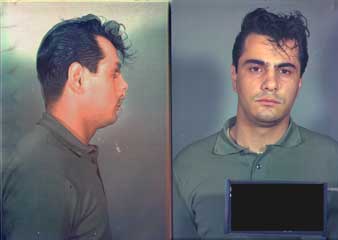The Collar
An early arrest proved no deterrent

In 1965 I was a patrolman with the Suffolk County Police Department on Long Island, New York. One late night on patrol in the hamlet of Selden I came upon a young man trying to break into Mickey’s Bar, a local watering hole that had closed hours earlier. My first thought was that he was a juvenile trying to get a last bottle of booze for the night. I pulled my gun and cornered him behind the tavern. Pushing him up against my patrol car, I warned him not to move a muscle or I’d blow his head off. (In those days the rules that governed our dealings with potential lawbreakers were more relaxed than they are now.)
“Don’t worry about me,” the man replied, “just worry about your finger on that trigger.” Keeping my gun trained on him, I managed to reach into my patrol car to radio for backup, which soon came. We collared the guy and a 300-pound accomplice we found waiting in a Chevy and brought them down to the station house for booking.
The young man was arrogant. When a detective asked him what he had been doing, he said, “I was taking a leak behind the building when Batman here comes flying at me.” We held him for 72 hours. It turned out he had other charges pending against him, and he eventually spent two and a half years in prison.
I didn’t think any more about him; he was just one of many offenders I’d encountered who, because of stupidity, desperation, or a little of both, decided to break the law and ended up paying for it. But after he got out of prison, this young man went on to bigger and better illegal enterprises. His criminal career filled the newspapers, and his numerous escapes from federal prosecution earned him the title “the Teflon Don.”
In the end the Teflon wore off, he was convicted of murder, and he died in prison. Little did I know that on that late-night patrol, I would be the first police officer ever to arrest John Gotti.
